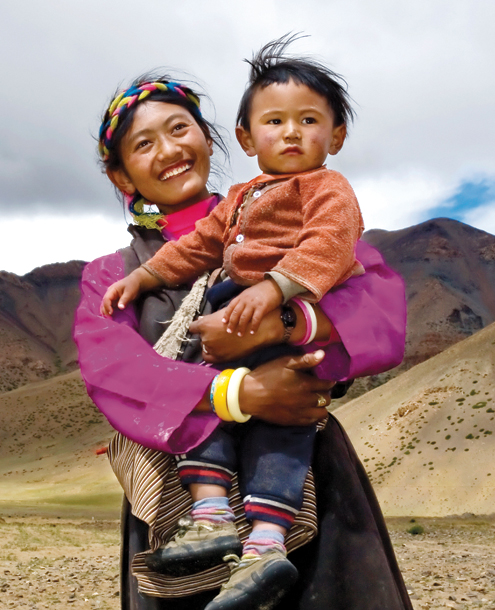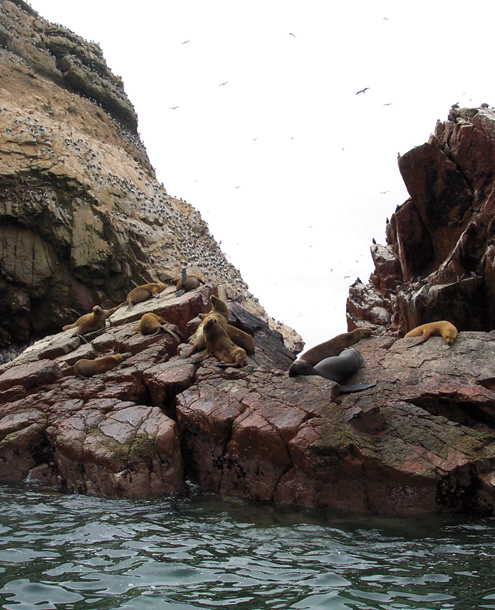Where Anthropology and Genetics Go Together
By Sandra J. Ackerman
Multidisciplinary teams take research into new terrain.
Multidisciplinary teams take research into new terrain.

The source of tuberculosis in ancient Peru, insidious ways that racism can take a toll on health, and the reproductive success of Tibetan highlanders are just a few of the topics that came up recently at the annual meeting of the American Association of Physical Anthropology. One session, sponsored by the American Association of Anthropological Genetics, presented studies of complex phenotypes—that is, traits arising from multiple genetic, environmental, and cultural risk factors.

TAO Images Limited/Alamy
If anthropology and genetics seem distant from each other on the scientific spectrum, Connie Mulligan—a professor of anthropology at the University of Florida as well as associate director of the university’s Genetics Institute— enthusiastically makes a case for bridging the gap. “It’s easier not to have to engage with another field’s terminology and culture of collection, but I think the coolest answers come from this type of approach,” she says.
For example, Cynthia Beall, of Case Western Reserve University, explores how natural selection may be affecting the reproductive success of people who live on the high mountain plateau bordering Tibet and Nepal, about three kilometers above sea level. Although visitors to the area are subject to altitude sickness as the concentration of hemoglobin in their blood increases rapidly in response to the unfamiliar thin atmosphere, native highlanders tend to have hemoglobin levels similar to those of people living at sea level. Without this adaptive trait, Tibetan mountain dwellers would have to sustain higher hemoglobin concentrations throughout their lives, at great metabolic cost.
Beall and her colleagues wanted to find out whether the adaptation was an instance of natural selection. Her collaborators—geneticists, public-health specialists, and biostatisticians as well as anthropologists and translators— collected data from more than 1,000 women, not only in the form of blood and saliva samples but also in lengthy interviews and family histories. The researchers found that the adaptation for nonelevated hemoglobin concentration does boost the success rate of pregnancies, amounting to “about a 2-percent greater probability that a pregnancy would result in a live birth,” says Beall. Acting on many successive generations, this seemingly slight advantage could amount to a significant effect from natural selection.
At the University of Florida, Mulligan and anthropologist Lance Gravlee are using a transdisciplinary approach to study the sociocultural and genetic factors that contribute to high blood pressure among African-American adults. “Racism is a chronic stressor even for many black people who never experience it directly,” Gravlee says, “so we measured a dimension of exposure to racism that others hadn’t assessed: vicarious racism, or exposure to race-based discrimination by hearing about the experiences of others.” By examining both genetic and sociocultural influences on heart health, Gravlee, Mulligan, and their colleagues found interactions between vicarious racism and five single nucleotide polymorphisms (SNPs) that are known to be associated with psychiatric disorders such as anxiety and depression, suggesting a novel biological pathway from vicarious racism to hypertension.

Jpschaaf/Wikimedia Commons
In another context, the efforts of archaeologists as well as anthropologists and geneticists have yielded new insights on the prehistory of a dreaded disease. Tuberculosis is commonly thought to have come to the Americas with colonial expeditions from Europe, and the similarity of the Mycobacterium tuberculosis genome on the two continents today seems to confirm this idea. Thus, anthropologist Anne Stone of Arizona State University was curious to study the genome of tuberculosis lesions that had been found on skeletons at a Peruvian site dating back several centuries before European contact. It was only by sequencing DNA from these lesions that she could identify the source of this ancient American tuberculosis, which turned out to be marine mammals—seals, in fact.
This discovery holds intriguing implications for several fields. In archaeology and anthropology, the evidence that precontact Native Americans were indeed affected by tuberculosis (albeit by different strains of the disease from the ones we know today) may alter some of what we thought we knew about the population of ancient Peru. In epidemiology, this finding may clear the way for new questions about how diseases mutate and jump from one species to another and about patterns of mutation with respect to drug resistance.
As a bonus, says Stone, “Our finding that tuberculosis was brought to the Americas by seals came as a huge surprise. It was one of those results where we were thinking, ‘Wow—we really couldn’t make this up.’” —Sandra J. Ackerman
Click "American Scientist" to access home page
American Scientist Comments and Discussion
To discuss our articles or comment on them, please share them and tag American Scientist on social media platforms. Here are links to our profiles on Twitter, Facebook, and LinkedIn.
If we re-share your post, we will moderate comments/discussion following our comments policy.